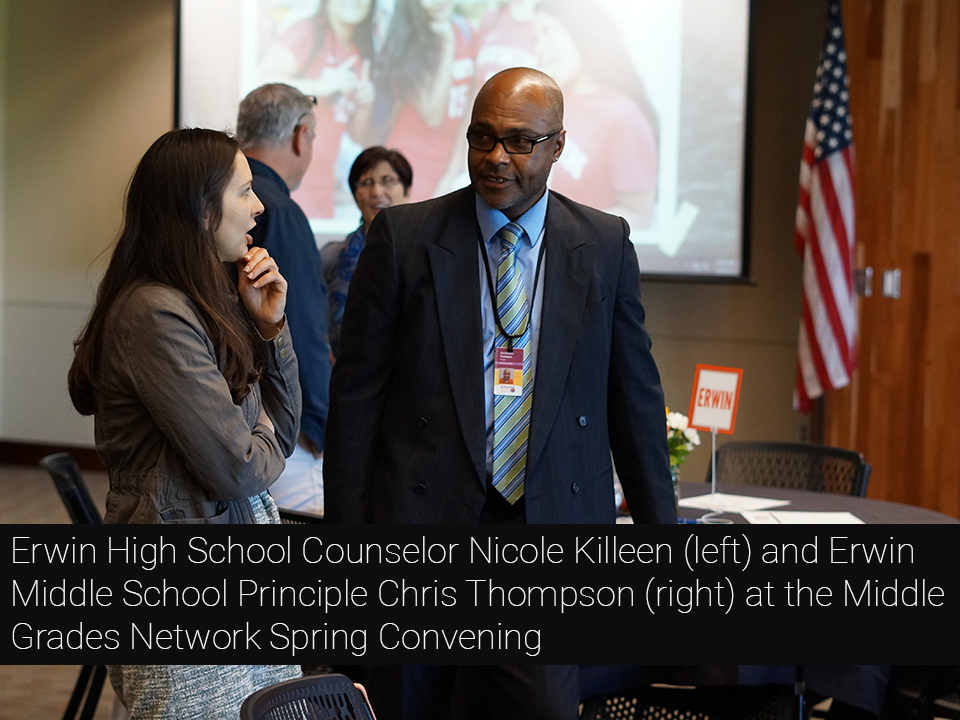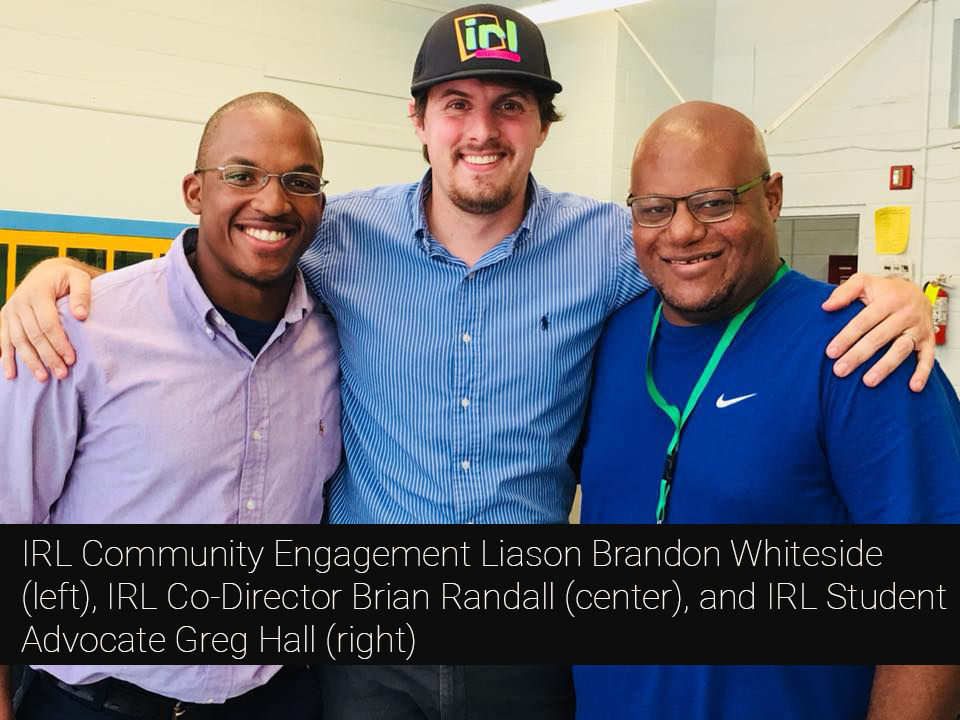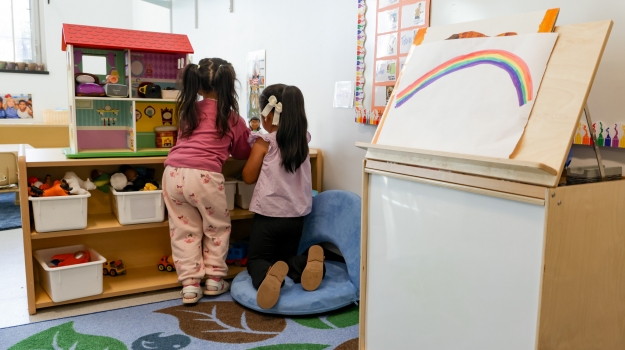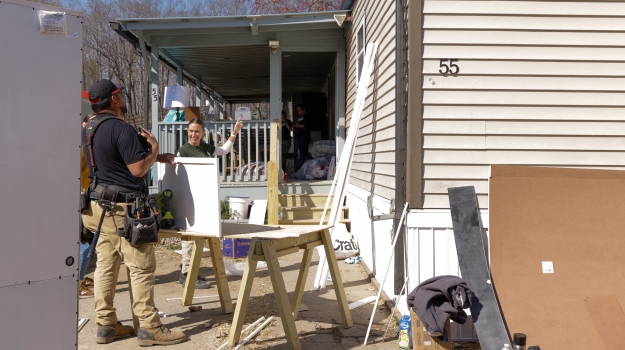Author: Laura Elliot, Director of Community Schools, United Way of Asheville and Buncombe County
This work was originally published in, or is adapted from, an article published in the February 2018 issue of Phi Delta Kappan magazine.
 Turn to any travel magazine, and you might see an article placing Asheville and Western North Carolina in a top 10 list of locations to relax or retire. There’s good reason for that. Asheville is nestled in a large valley bordered by the Blue Ridge and Appalachian mountains. People here are generous and welcoming. Our landscape is beautiful. The arts and culture scene is vibrant. People young and old flock to Asheville every year to experience outdoor adventures, absorb the vibrant colors of the autumn leaves, and enjoy the nationally recognized culinary scene. Many become so enthralled by their experience that they pull up stakes and move here permanently. Yet the daily lives of those who live and work in Buncombe County — especially those who live in poverty — are often hidden from view and differ greatly from the lives of tourists and newcomers.
Turn to any travel magazine, and you might see an article placing Asheville and Western North Carolina in a top 10 list of locations to relax or retire. There’s good reason for that. Asheville is nestled in a large valley bordered by the Blue Ridge and Appalachian mountains. People here are generous and welcoming. Our landscape is beautiful. The arts and culture scene is vibrant. People young and old flock to Asheville every year to experience outdoor adventures, absorb the vibrant colors of the autumn leaves, and enjoy the nationally recognized culinary scene. Many become so enthralled by their experience that they pull up stakes and move here permanently. Yet the daily lives of those who live and work in Buncombe County — especially those who live in poverty — are often hidden from view and differ greatly from the lives of tourists and newcomers. Most of the county’s residents live in rural and underserved communities, and nearly 29% of our children live in households receiving public assistance (U.S. Census Bureau, 2016). The opioid epidemic is on the rise at an alarming rate. In the first eight months of 2017, Bucombe County experienced 230 cases of opioid overdose, up from 84 over the same period last year (Bordas, 2017). In a recent survey of middle school students by the United Way, one in three reported having experienced three or more Adverse Childhood Experiences as compared to the national average of one in five (Wolpow et al., 2016). Our local school systems are serving families living in urban public housing and others living in 7th-generation farming communities in the far corners of the county. Addiction, domestic violence, and mental illness cut across racial, socioeconomic, and geographic divides. Students bring these issues into the classroom every day. But expecting schools to address these issues on their own is unrealistic. Expecting schools to act alone to deal with long-standing and emerging issues affecting the health and well-being of students and families is unrealistic.
Uniting school and community partners
Schools and community nonprofit partners across the country are seeking innovative and often courageous new ways to address long-standing and emerging issues affecting the health and well-being of students and families. Searching for ways to have a deeper effect on the education, health, and financial stability of their communities, many are finding that community schools are a powerful strategy in that effort.
This has been the case for United Way of Asheville and Buncombe County as well. In 2013, Asheville City Schools, Buncombe County Schools, United Way of Asheville and Buncombe County, and a host of out-of-school-time program partners (we began with 15 and have expanded to 40) created the Asheville Buncombe Middle Grades Network with the shared goal of increasing graduation rates across the city and county school systems. Together, we implement several key strategies. For example, we have an Early Warning and Response System that relies on a data-sharing agreement between the school system and community partners to flag students who are off-track toward graduation and link them to in-school interventions and out-of-school supports. We share a common volunteer and mentor recruitment campaign called Who Got You Through. And last year, we began implementing Homework Diners — a free, weekly family meal with homework help provided for all school-age children and links to community resources that support the whole family — in three of our seven school districts, with plans to expand to all eight.
Further, as the work has evolved, we have expanded to include a greater range of social service providers in an effort to meet the region’s health needs. Specifically, Buncombe County Schools has adopted a Compassionate Schools model (described below), while Asheville City Schools has focused on strategies to identify and respond to children with adverse childhood experiences and develop community resilience. These approaches continue to scale up, but in 2017, the Coalition for Community Schools and the Robert Wood Johnson Foundation recognized the Asheville Middle Grades Network as one of the top five initiatives across the county focused on building a strong and lasting culture of health.
County schools: Focus on compassion
 In 2014, David Thompson, director of student services for Buncombe County Schools, began pushing the district to change an age-old approach to dealing with struggling students. He challenged colleagues to shift from asking “What is wrong with this child?” to “What has happened to this child, and what can we do to help him or her overcome these issues?” He reasoned that educators could provide more effective instruction and support if they made it a priority to collect better data on students’ health needs, rather than continuing to make assumptions about the reasons why they might be underperforming. As this mind shift was taking hold, Thompson launched a Compassionate Schools program in nine Buncombe County Schools.
In 2014, David Thompson, director of student services for Buncombe County Schools, began pushing the district to change an age-old approach to dealing with struggling students. He challenged colleagues to shift from asking “What is wrong with this child?” to “What has happened to this child, and what can we do to help him or her overcome these issues?” He reasoned that educators could provide more effective instruction and support if they made it a priority to collect better data on students’ health needs, rather than continuing to make assumptions about the reasons why they might be underperforming. As this mind shift was taking hold, Thompson launched a Compassionate Schools program in nine Buncombe County Schools. A compassionate school is one where all staff, not just counselors, seek to learn about — rather than prejudge — the physical, social, academic, and emotional challenges facing local students and families, as a first step to designing better services (Wolpow et al., 2016). Further, the school coordinates with community partners working to provide mental and behavioral health supports.
Buncombe County Schools had already been providing individual therapy for some students at school, but assessments revealed that many students who did not qualify for individual services could benefit from group counseling that focused on issues such as substance abuse and domestic violence. Other students met criteria for individual therapy, but counseling services were cost-prohibitive and not realistic for those from low-income families. Further, given that bilingual services were limited in this rural area, there was an urgent need to provide mental health services specific to non-English-speaking students. To fill this gap, Buncombe County Schools partnered with the local United Way and a bilingual mental health provider to create a fund of about $20,000 per year that would enable uninsured and underinsurance students to have access to individual, group, and family counseling services at the school site.
Buncombe County Schools also joined with United Way and other community partners to offer shared professional development that would help ensure consistent responses to student behavior. As a result, all adults working with students, whether in school or in community programs, now learn the same strategies for incorporating trauma-informed practices in their classrooms and out-of-school-time programming.
According to Thompson, these partnerships are “essential to supporting the social and emotional needs of students and their families.” He notes that “the focus on creating compassionate schools using trauma-informed strategies is becoming the driving force for implementing the community school strategy, which promotes better mental health outcomes for all students.”
To evaluate and improve these efforts, Buncombe County regularly administers a student strengths assessment. In just the first year of full implementation of Compassionate Schools, Thompson said, 10 of the district’s 26 schools showed significant increases in their scores. In addition, nine of those 10 schools also met or exceeded their expected growth on the state’s end-of-grade tests.
City schools: Focus on resiliency
Jesse Pitt, 6th-grade school counselor at Asheville Middle School, is all too familiar with the trauma his students bring to school each day. Many come from homes where there is unrest or from neighborhoods where violence has been normalized, and they remain in a triggered state of fight-or-flight as they move through the school day. For years, as students spent time in his office during individual and small group counseling sessions, Pitt was aware that those minutes might be the only time in the day when those children could calm down and feel safe.
Several years ago, Pitt joined with Kim Robinson, Asheville Middle School’s social worker, and other school system leaders to research the Community Resiliency Model (CRM) and the use of mindfulness practices to improve behavioral and academic outcomes. “Both practices are rooted in the biology and science of our nervous system,” Pitt said. “They use skills and techniques to help the nervous system reset. They offer opportunities to increase resilience through self-care. And they rely on a lens of nonjudgment, acceptance, and compassion.”
 To truly make a difference, new practices need to be integrated throughout the school day and in after-school programs.
To truly make a difference, new practices need to be integrated throughout the school day and in after-school programs. Asheville Middle School’s leadership team knew that if it was going to truly make a difference in the lives of students and the culture of the school, these practices needed to be integrated throughout the school day and with its after-school partners. After piloting the practices with a small group of staff for two years, each Asheville middle school now incorporates three 20-minute blocks schoolwide each week for mindfulness practice. To reinforce what students learn during the school day, the In Real Life after-school programs also have embraced the same practices. In Real Life (IRL), a network of nearly 50 program providers from local scientists to artists, college professors, and outdoor recreation enthusiasts, is supported by the Asheville City School Foundation.
“We want to teach these skills to the middle school students who need them the most. The initiative is aligned with our continued work promoting racial equity and social justice within schools,” said Brian Randall, IRL program director. “We understand that in order to ensure excellence with equity for all students, we must first focus on promoting resilience, social-emotional learning, and experiential education.”
To illustrate the effect and usefulness of mindfulness and resiliency practices, Randall shares the following story from an Asheville teacher:
A female student who has a history of struggling with regulating emotions was having a particularly difficult day at school. Once our lesson was over, I asked her to stay and chat for a minute. She was obviously bumped out of her (resiliency) zone and stuck on low with her head down and shoulders slumped forward. Using a CRM skill that helps students focus on internal resources of support, I asked her to “tell me a memory of something that brings you joy or makes you feel happy inside.” This young lady, who tends to be oppositional, recalled a memory of living in New York and watching fireworks. She then went on to tell me about being with her grandmother and brother on the beach on a warm summer evening while sitting on a blanket in the sand. As she told me the details of the evening, a smile came over her face, she sat up a little taller, and her shoulders dropped. You could tell that this memory triggered a physical and emotional response for this student. Watching the calm come over her face and body was a very inspiring CRM moment.
While these skills may seem simple, their effect can be profound. However, interventions such as these are often lost in the pressures and pace of the school day. By providing training, coaching, and support, schools and community partners can infuse these practices into their daily routine and create calm, welcoming, and productive learning environments that support the overall health and well-being of not just their students but staff and faculty as well. According to Randall, since the new strategies have been adopted and put into consistent use, teachers and parents have reported that student behavior and grades have improved significantly.
“Now more than ever”
The Asheville Buncombe Middle Grades Network has grown to include more than 40 school and community partners. From grassroots organizations to anchor institutions, the network is committed to ensuring that all school and partner programs are safe, welcoming, and compassionate, that students and families have the tools to live healthy and successful lives, and that all students graduate ready for college, career, and community.
“We believe that public education is a vital part of a successful democracy and a key element in breaking the cycle of poverty,” says Rebecca Abide of the Asheville City School Foundation. “Now more than ever, public education needs a broad network of unified community support.”
References
Bordas, A. (2017, September 25). Buncombe County opioid overdose rate nearly tripled in 2017. Asheville Citizen Times.
U.S. Census Bureau (2016). 2012-2016 American Community Survey. Washington, DC: Author.
Wolpow, R., Johnson, M., Hertel, R., & Kincaid, S. (2016, May). Compassionate Schools: The heart of teaching and learning.
Originally published in February 2018 Phi Delta Kappan 99 (5), 47-50. © 2018 Phi Delta Kappa International. All rights reserved.
Categories


